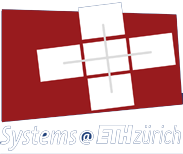Publication
IEEE Data Eng. Bull., January 2017
High-throughput, low-latency networks are becoming a key element in database appliances and data processing systems to reduce the overhead of data movement. In this article, we focus on Remote Direct Memory Access (RDMA), a feature increasingly available in modern networks enabling the network card to directly write to and read from main memory. RDMA has started to attract attention as a technical solution to quite a few performance bottlenecks in distributed data management but there is still much work to be done to make it an effective technology suitable for database engines. In this article, we identify several advantages and drawbacks of RDMA and related technologies, and propose new communication primitives that would bridge the gap between the operations provided by high-speed networks and the needs of data processing systems.
@article{abc,
abstract = {High-throughput, low-latency networks are becoming a key element in database appliances and data processing systems to reduce the overhead of data movement. In this article, we focus on Remote Direct Memory Access (RDMA), a feature increasingly available in modern networks enabling the network card to directly write to and read from main memory. RDMA has started to attract attention as a technical solution to quite a few performance bottlenecks in distributed data management but there is still much work to be done to make it an effective technology suitable for database engines. In this article, we identify several advantages and drawbacks of RDMA and related technologies, and propose new communication primitives that would bridge the gap between the operations provided by high-speed networks and the needs of data processing systems.},
author = {Claude Barthels and Gustavo Alonso and Torsten Hoefler},
journal = {IEEE Data Eng. Bull.},
title = {Designing Databases for Future High-Performance Networks.},
url = {http://sites.computer.org/debull/A17mar/p15.pdf},
year = {2017}
}

